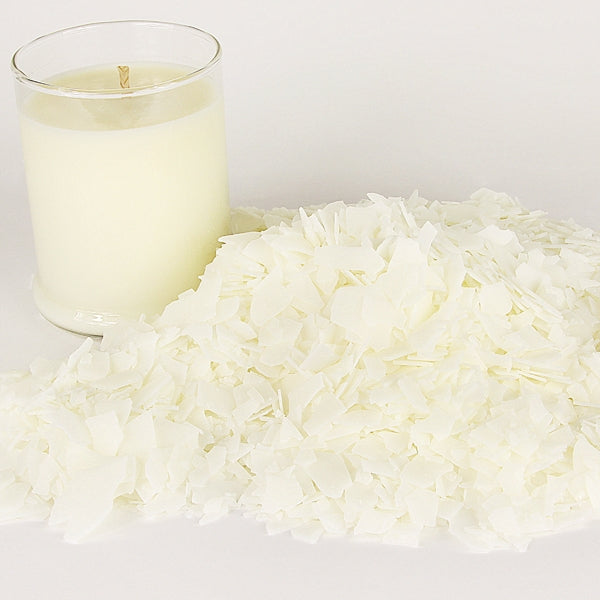Create Setting with Handmade Soy Wax Candles and Home Fragrance
Create Setting with Handmade Soy Wax Candles and Home Fragrance
Blog Article
From Wick to Wax: Recognizing the Chemistry Behind Soy Wax Candles and Their Ecological Effect
As we illuminate our rooms with the warm radiance of candle lights, there lies a realm of complex chemistry behind the relatively straightforward act of lighting a soy wax candle. Join us as we unwind the clinical ins and outs behind soy wax candle lights and explore their ramifications on our setting.
Soy Wax Vs. Paraffin Wax
When contrasting soy wax and paraffin wax for candle making, it is crucial to understand the unique attributes and advantages of each product. Soy wax is a natural, renewable energy derived from soybean oil, making it environmentally friendly and eco-friendly - soy wax candles. In contrast, paraffin wax is a result of petroleum refining, which elevates issues regarding its ecological impact and sustainability
Soy wax candles burn cleaner and release much less soot compared to paraffin wax candles, making them a much healthier selection for indoor air high quality. Additionally, soy wax has a lower melting point, enabling a longer-lasting candle that disperses scent better. Paraffin wax, on the other hand, tends to shed faster and much less easily, possibly releasing damaging chemicals into the air.
From a sustainability viewpoint, soy wax is preferred for its biodegradability and sustainable sourcing, straightening with the expanding consumer preference for eco aware products. While paraffin wax has actually been a standard option in candle making as a result of its cost and ease of use, the shift towards green options like soy wax is gaining momentum in the sector.
Chemical Structure of Soy Wax

Combustion Refine in Soy Candles
The chemical composition of soy wax straight affects the combustion process in soy candles, influencing elements such as shed time, scent launch, and environmental impact. When a soy candle is lit, the warmth from the fire thaws the wax near the wick. This fluid wax is then created the wick because of capillary action. As the liquid wax reaches the fire, it evaporates and undertakes burning. The combustion process involves the vaporized hydrocarbons in the wax responding with oxygen airborne to produce warm, light, water vapor, and carbon dioxide.
The combustion efficiency of soy candle lights is influenced by the purity of the soy wax and the quality of the wick. A clean-burning soy candle with a properly sized wick will certainly reduce and generate a consistent flame residue formation. This not only prolongs the burn time of the candle light however also improves the launch of fragrances. Additionally, soy wax candle lights have a lower environmental influence compared to paraffin candles as a result of their biodegradable and eco-friendly nature.

Ecological Benefits of Soy Wax

Considered a lasting option to conventional paraffin wax, soy wax offers remarkable environmental advantages a knockout post that make it a preferred choice amongst eco-conscious consumers. Soy wax burns cleaner and creates much less soot than paraffin wax, contributing to far better indoor air top quality and decreasing the demand for cleaning and maintenance. On the whole, the ecological advantages of soy wax align with the growing demand for green and sustainable products in the market.
Recycling and Disposal Considerations
Reusing and correct disposal of soy wax candle lights play a crucial function in preserving environmental sustainability and lowering waste in households and neighborhoods. The initial step is to guarantee that the candle has shed completely when it comes to recycling soy wax candle lights. This can be attained by permitting the candle to burn until the wick is no longer functional, and then allowing the remaining wax cool and strengthen. As soon as the wax has solidified, it can be meticulously eliminated from the container.

In terms of disposal, if recycling is not a choice, soy wax candles are eco-friendly and can be safely disposed of in a lot of home waste systems. It is constantly advised to inspect with neighborhood reusing facilities or waste monitoring services for particular standards on candle disposal to guarantee proper handling and environmental security.
Final Thought
Finally, the chemistry behind soy wax candle lights exposes their environmental benefits over paraffin wax candle lights. Soy wax, originated from soybean oil, burns cleaner and creates much less residue when compared to paraffin wax. The combustion procedure in soy candles is extra efficient, causing a longer and more also shed. Additionally, soy wax is biodegradable and sustainable, making it an extra sustainable choice for candle manufacturing. Recycling and correct disposal of soy wax candles additionally add to their environmental impact.
When comparing soy wax and paraffin wax for candle light making, it is necessary to comprehend the unique qualities and advantages of each material (crystal soy candles).Soy wax candles shed cleaner and send out less soot compared to paraffin wax candles, making them a much healthier choice for interior air top quality.Considered a lasting alternative to conventional paraffin wax, soy wax visit this website uses remarkable ecological benefits that make it a popular choice among eco-conscious consumers. Soy wax burns cleaner and produces less soot than paraffin wax, contributing to better indoor air high quality and decreasing the need for cleaning and maintenance.In verdict, the chemistry behind soy wax candle lights discloses their ecological benefits over paraffin wax candle lights
Report this page